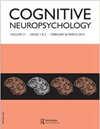Toward a standard model of consciousness: Reconciling the attention schema, global workspace, higher-order thought, and illusionist theories
IF 2.6
3区 心理学
Q2 PSYCHOLOGY
引用次数: 68
Abstract
ABSTRACT Here we examine how people’s understanding of consciousness may have been shaped by an implicit theory of mind. This social cognition approach may help to make sense of an apparent divide between the physically incoherent consciousness we think we have and the complex, rich, but mechanistic consciousness we may actually have. We suggest this approach helps reconcile some of the current cognitive neuroscience theories of consciousness. We argue that a single, coherent explanation of consciousness is available and has been for some time, encompassing the views of many researchers, but is not yet recognized. It is obscured partly by terminological differences, and partly because researchers view isolated pieces of it as rival theories. It may be time to recognize that a deeper, coherent pool of ideas, a kind of standard model, is available to explain multiple layers of consciousness and how they relate to specific networks within the brain.走向意识的标准模型:协调注意图式、全局工作空间、高阶思维和幻觉理论
在这里,我们研究人们对意识的理解是如何被内隐心智理论所塑造的。这种社会认知方法可能有助于理解我们认为自己拥有的物理上不连贯的意识和我们实际上可能拥有的复杂、丰富但机械的意识之间的明显区别。我们认为这种方法有助于调和当前一些关于意识的认知神经科学理论。我们认为,一个单一的,连贯的解释意识是可用的,已经有一段时间了,包括许多研究人员的观点,但尚未得到承认。部分原因是术语上的差异,部分原因是研究人员将其孤立的部分视为对立的理论。也许是时候认识到,有一种更深层次的、连贯的想法池,一种标准模型,可以用来解释多层次的意识,以及它们与大脑中特定网络的关系。
本文章由计算机程序翻译,如有差异,请以英文原文为准。
求助全文
约1分钟内获得全文
求助全文
来源期刊

Cognitive Neuropsychology
医学-心理学
CiteScore
5.50
自引率
11.80%
发文量
23
审稿时长
>12 weeks
期刊介绍:
Cognitive Neuropsychology is of interest to cognitive scientists and neuroscientists, neuropsychologists, neurologists, psycholinguists, speech pathologists, physiotherapists, and psychiatrists.
 求助内容:
求助内容: 应助结果提醒方式:
应助结果提醒方式:


